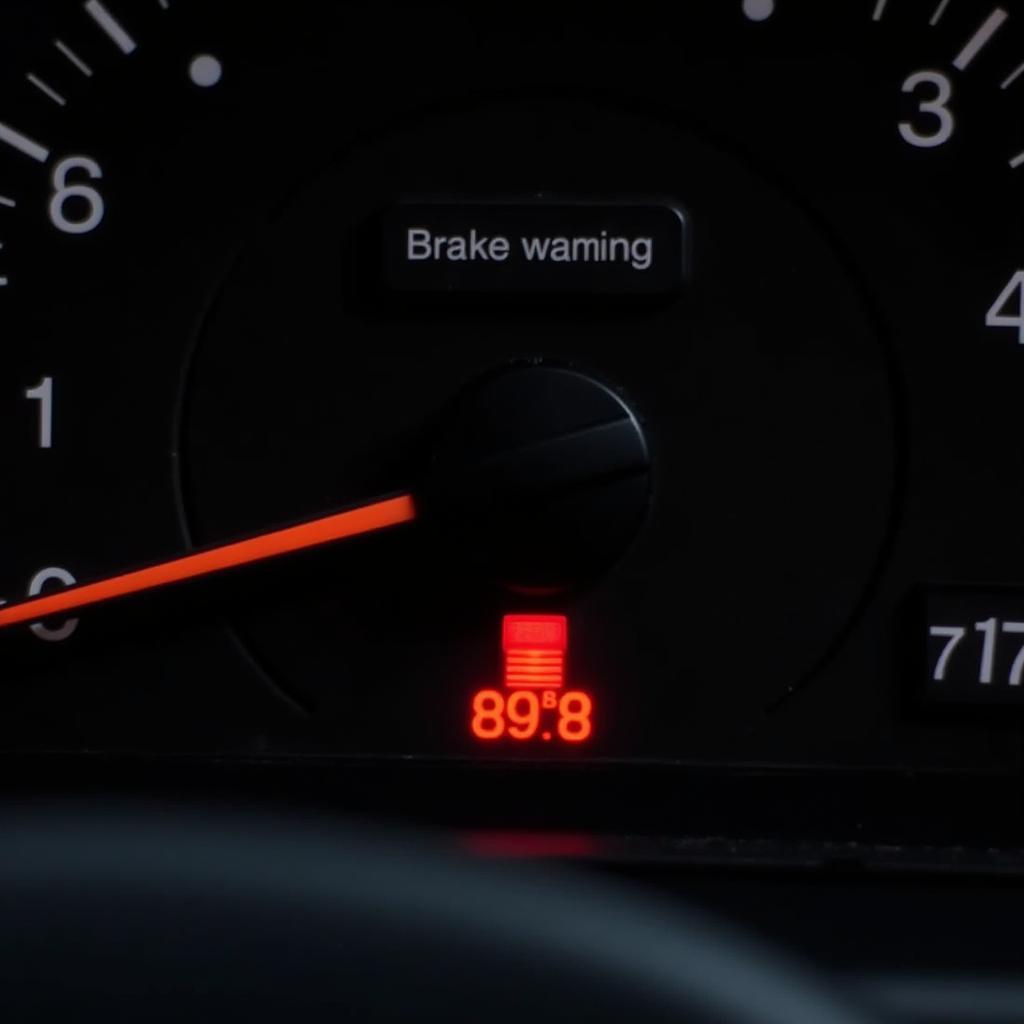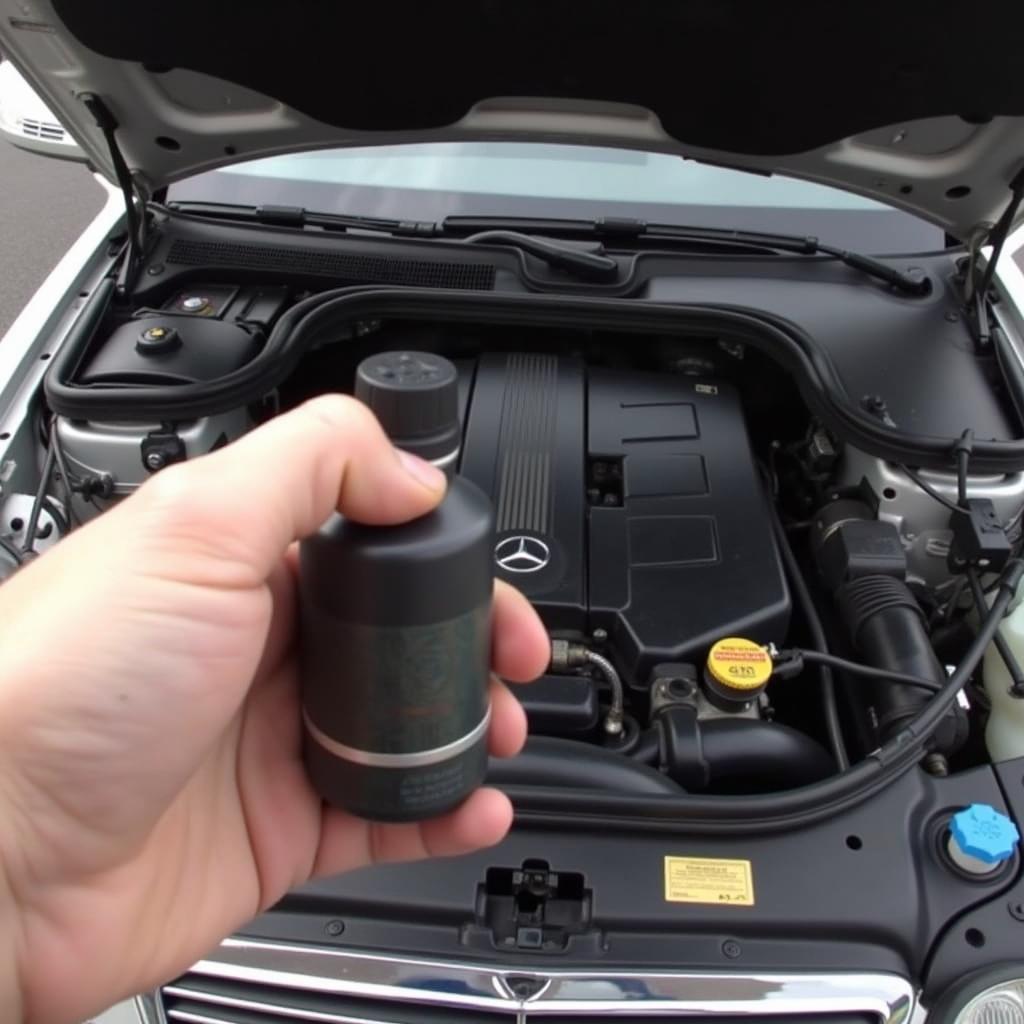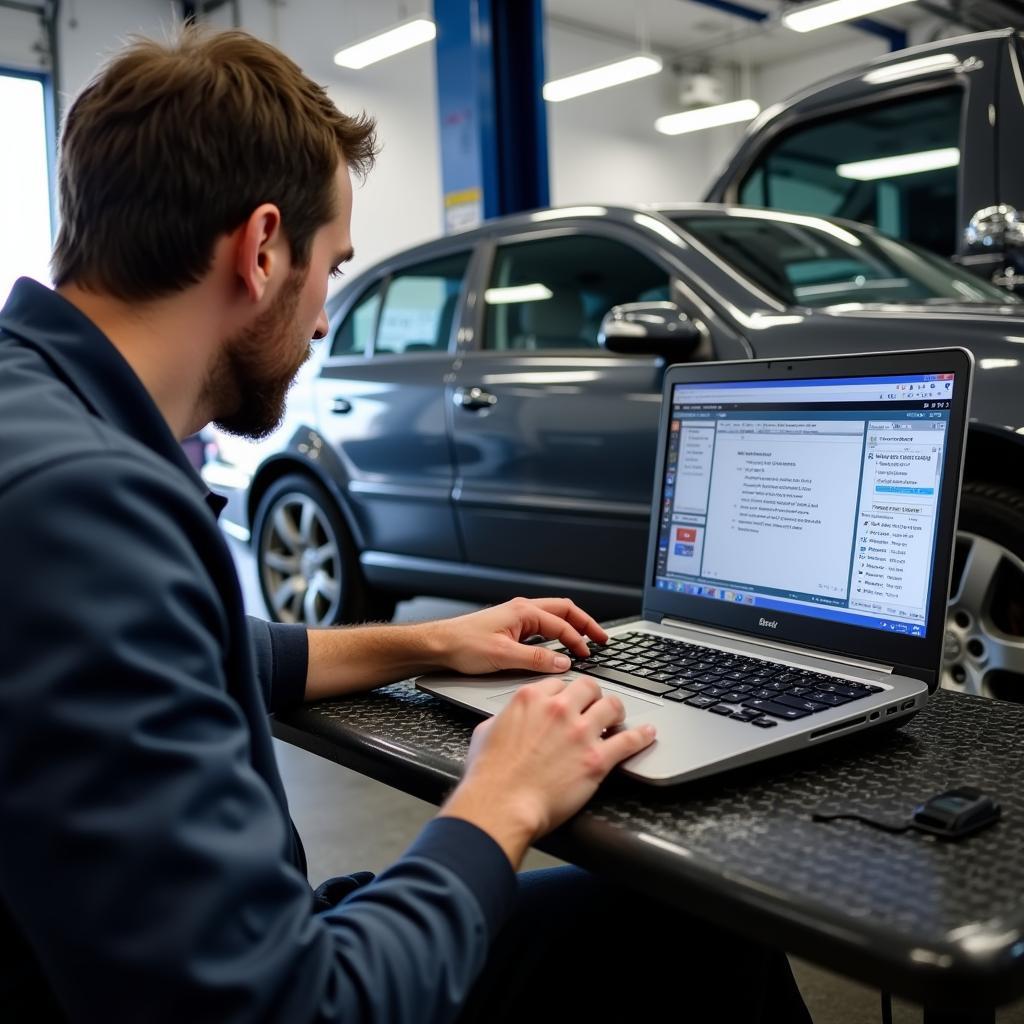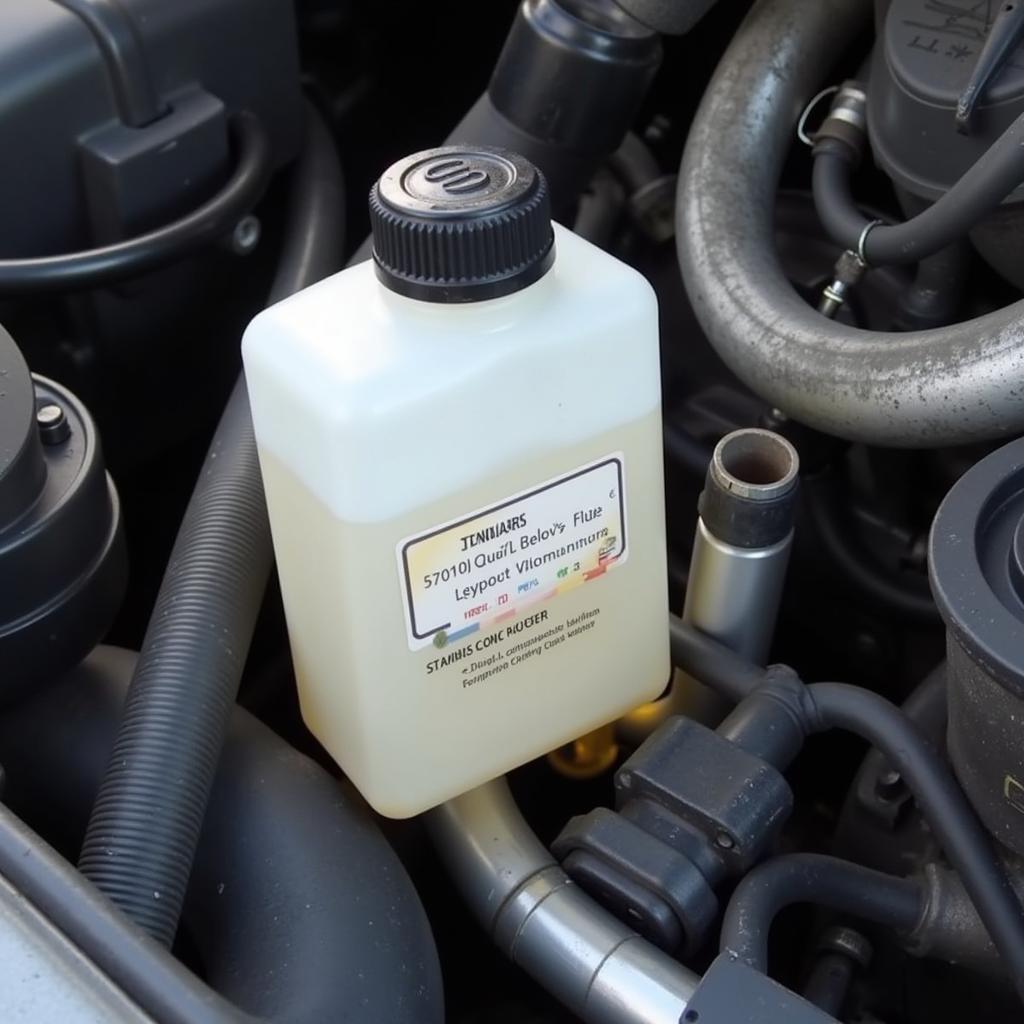A red brake warning light illuminating on your 2003 Mercedes-Benz E320’s dashboard, often accompanied by a persistent buzzer, is your car’s way of communicating a potential issue with the braking system. Ignoring this warning could jeopardize your safety and lead to costly repairs down the line. This comprehensive guide delves into the common causes behind the red brake warning light and buzzer in a 2003 E320 and outlines the steps to diagnose and address them.
 Red Brake Warning Light on E320 Dashboard
Red Brake Warning Light on E320 Dashboard
Understanding the Brake Warning System
Before we dive into the specifics of the 2003 E320, it’s crucial to understand how car brake warning systems generally operate. The red brake warning light is connected to several components within your vehicle’s braking system, including:
- Brake Fluid Level Sensor: This sensor monitors the level of brake fluid in the master cylinder. A low fluid level, often due to a leak, triggers the warning light.
- Parking Brake Switch: Engaging the parking brake activates this switch, illuminating the warning light to remind you to disengage it before driving.
- Brake Pad Wear Sensors: Some E320 models are equipped with sensors that monitor brake pad wear. When the pads wear down to a certain level, the sensor triggers the warning light.
- ABS System: The Anti-lock Braking System (ABS) has its own set of sensors and control modules. A malfunction within the ABS system can also trigger the brake warning light.
Common Causes in the 2003 E320
While the general causes mentioned above apply to most vehicles, some issues are more prevalent in the 2003 Mercedes-Benz E320:
- Brake Fluid Leak: The E320, like many Mercedes models of its era, can be prone to brake fluid leaks as they age. Inspect the master cylinder, brake lines, and calipers for any signs of leakage.
- Worn Brake Pads: Over time, brake pads naturally wear down. If your E320 is equipped with brake pad wear sensors, this is a likely culprit.
- Faulty Brake Light Switch: While seemingly unrelated, a malfunctioning brake light switch can sometimes interfere with the brake warning light circuit, causing it to illuminate.
- ABS Sensor Issue: ABS sensors can become dirty or damaged, leading to faulty readings and triggering the warning light.
 Checking Brake Fluid in E320
Checking Brake Fluid in E320
Diagnosing the Problem
A systematic approach is key to identifying the root cause of the brake warning light and buzzer in your 2003 E320:
- Check the Parking Brake: Ensure the parking brake is fully disengaged. It’s surprising how often this simple oversight is the cause.
- Inspect Brake Fluid Level: With the engine off, open the hood and locate the brake fluid reservoir. The reservoir is usually translucent, allowing you to visually inspect the fluid level. If it’s low, there’s likely a leak.
- Visual Inspection: Carefully examine the master cylinder, brake lines, and calipers for any signs of fluid leakage. Look for wet spots, drips, or discolored areas.
- Consult a Professional: If you’re unable to pinpoint the issue or suspect a more complex problem like a faulty ABS sensor or brake light switch, it’s best to consult a qualified mechanic specializing in Mercedes vehicles.
Remote Diagnostics and Software Solutions
In today’s technologically advanced automotive landscape, remote diagnostics and software solutions have become invaluable tools for addressing car problems. If you’re experiencing the red brake warning light and buzzer in your 2003 E320, leveraging these services can provide several benefits:
- Pinpoint Electrical Faults: Remote diagnostics can often identify issues with sensors, modules, and electrical circuits within the braking system, which might not be apparent through visual inspection.
- Software Updates: Occasionally, software glitches or outdated modules can trigger warning lights. Remote software updates can rectify these issues without requiring a physical visit to the workshop.
 Remote Diagnostics on E320
Remote Diagnostics on E320
Conclusion
The red brake warning light and buzzer in your 2003 Mercedes E320 should never be ignored. By understanding the potential causes, performing basic checks, and considering remote diagnostics when appropriate, you can address the issue promptly and ensure your safety on the road. Remember, when in doubt, always consult a qualified mechanic for a thorough inspection and repair.

